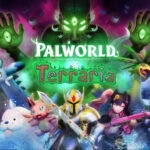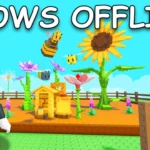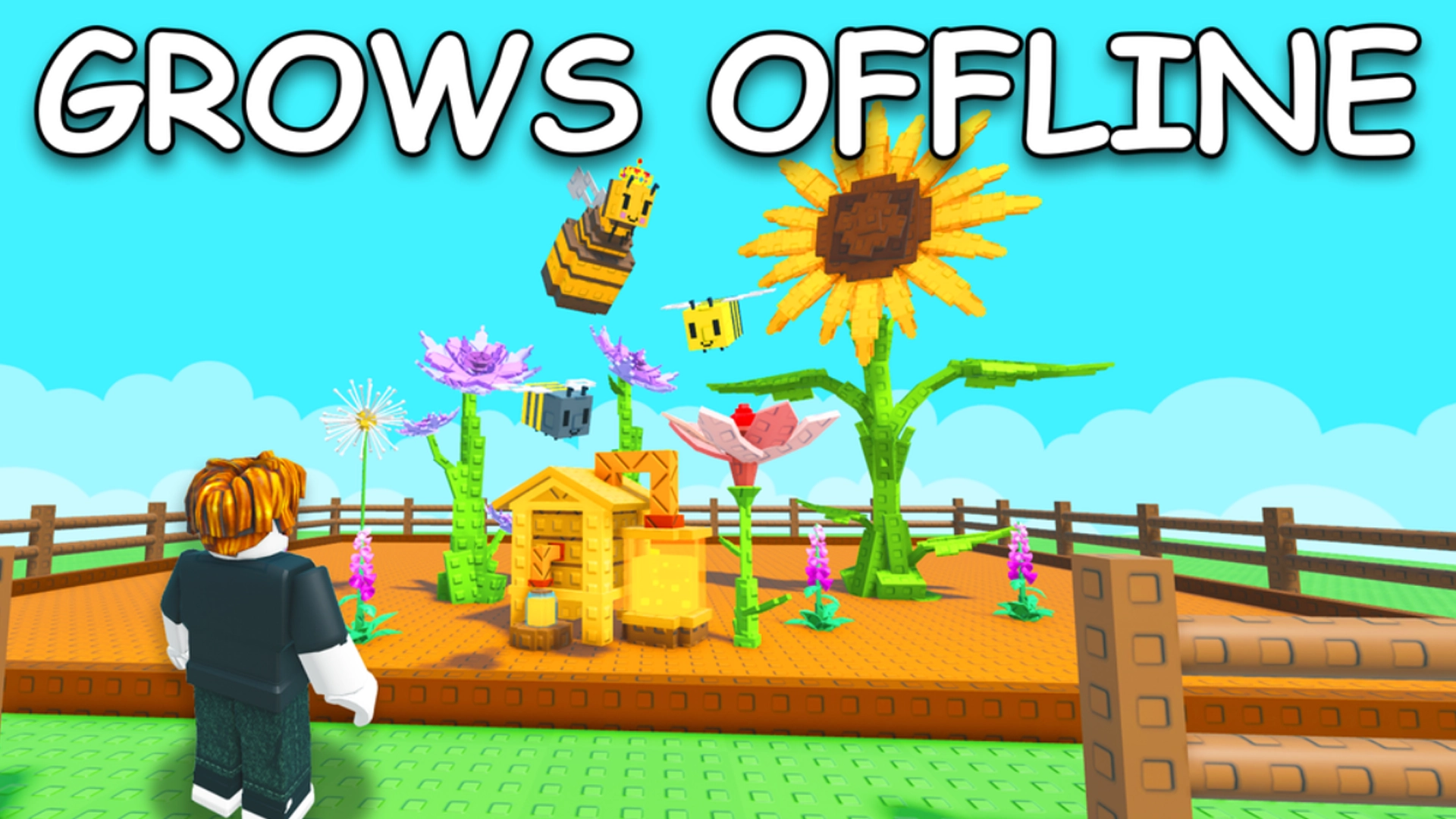If you’ve ever wanted to live the peaceful life of a farmer without leaving your gaming chair, Grow a Garden on Roblox is here to scratch that agrarian itch. It’s basically FarmVille for Gen Z, minus the Facebook spam and with more monkeys that boost your crop yield.
This runaway farming sim has quietly become one of the biggest games on Roblox, recently raking in over 21 million concurrent players—a number that would make Fortnite sweat. And what are all those players doing? Planting carrots. Selling radishes. Hoarding Sheckles like it’s the Great Depression. And somehow, it’s addictive as hell.
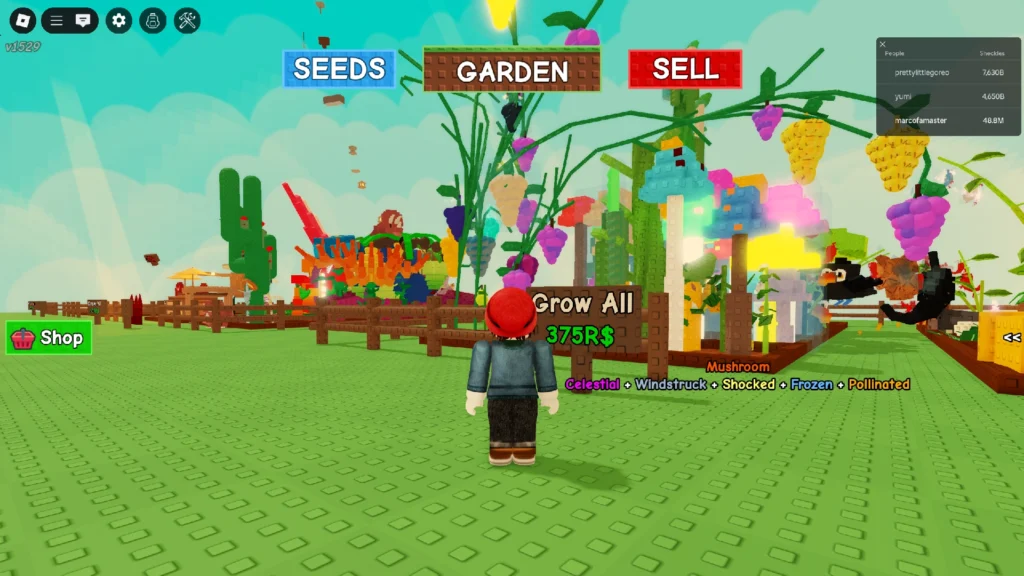
At its core, Grow a Garden is an idle clicker disguised as a cozy sim, dressed up in adorable visuals and fueled by the kind of upgrade loop that turns “just five more minutes” into two lost hours and a drained laptop battery. You plant seeds, wait them out (or log off and let them grow on their own), harvest, and reinvest your profits into bigger plots, rarer seeds, and yes—digital goats with sparkle trails.
And don’t let the chill aesthetic fool you: under the surface, this game is pure min-maxing strategy. Want to scale quickly? You’ll need to learn which seeds give the best ROI, when to spend your Sheckles, and which pets are worth chasing. You can absolutely zone out and let your garden do its thing, but if you’re here to rise through the ranks, you’ll need to farm smart—not just hard.
This guide will walk you through everything from your first carrot to your 50th expansion plot:
- Which seeds to plant (and which to skip)
- How to maximize profits (without spending Robux)
- The fastest way to grow (without burning out)
- Why pets are more than just pixelated companions
Whether you’re in it for the leaderboard climb or just want a peaceful place to click on turnips while ignoring homework, this guide has you covered. Let’s get planting.
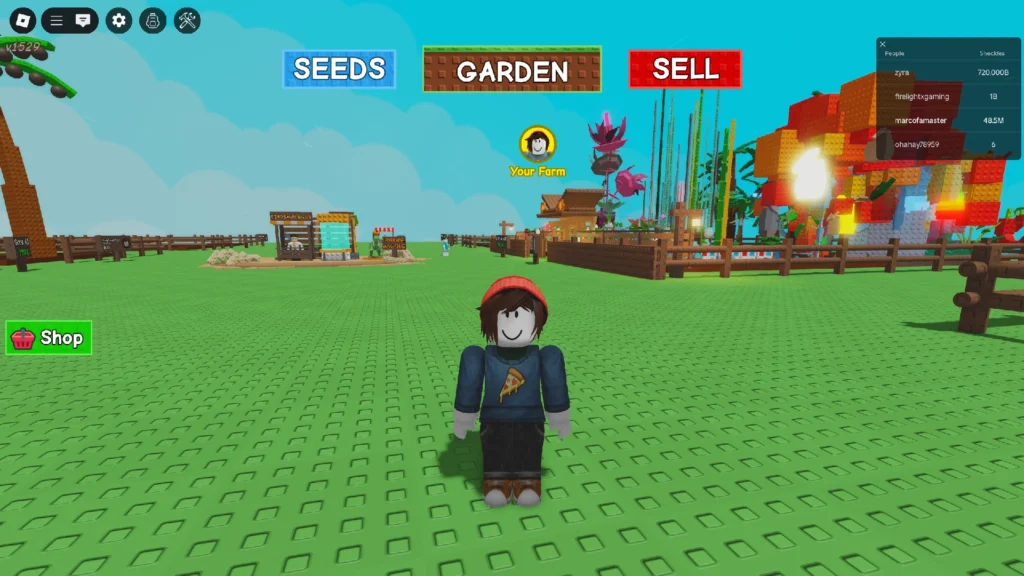
Getting Started
So you’ve loaded up Grow a Garden and you’re staring at a patch of dirt. Good. You’re already halfway to becoming a carrot tycoon. Here’s how to get your farming empire up and running:
At first glance, Grow a Garden looks like a chill little tap-and-wait sim. And it is. But it’s also a spreadsheet in disguise. Under the cute graphics is a tightly designed progression loop built to feed your brain those sweet, sweet dopamine hits every time a radish ripens. Here’s the core gameplay loop:
Plant → Wait → Harvest → Spend → Upgrade → Repeat
This is the engine everything runs on. Once your crops are in the ground, they grow automatically—no micromanagement required. Time passes whether you’re online or offline, which means this game respects your schedule (or your attention span).
Once ready, crops sparkle. You click, you harvest, you earn Sheckles. Then it’s on you to reinvest smartly to keep the loop spinning faster and more profitably.
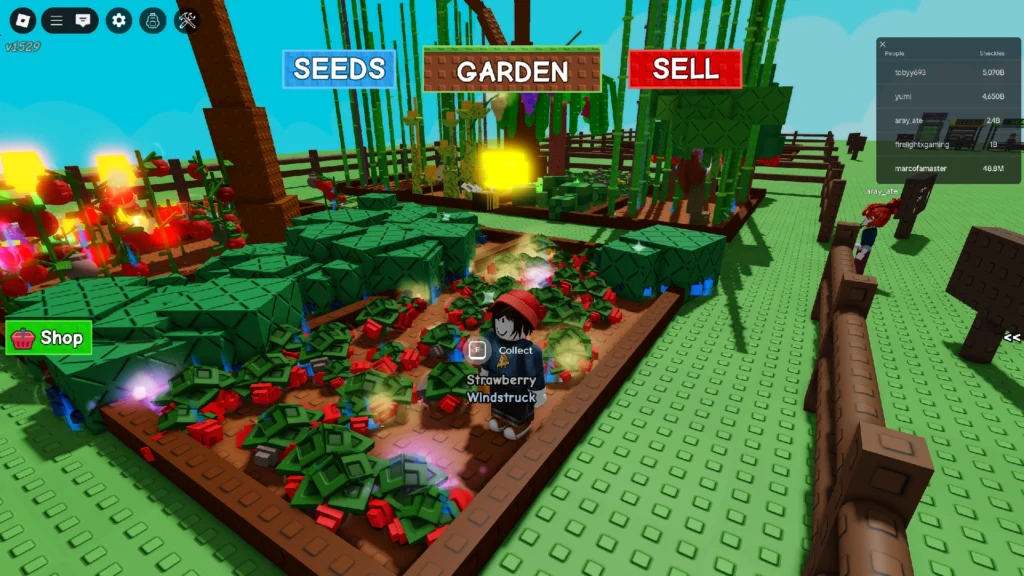
You don’t have to log off, but if you’re sticking around, here’s how to make the most of your time:
- Check growth timers: Different seeds take different times. Mix short and long crops to optimize returns.
- Explore the seed shop: As you unlock new plants, compare their yield vs. cost.
- Tap your pets (if unlocked): Some have chargeable boosts for growth speed or profits.
- Grab Sheckle Crates: Free currency spawns around your plot occasionally. Grab it.
If you’re really idle-idling, use that time to scroll social, fold laundry, or contemplate the moral implications of hyper-efficient digital carrot farming.
The offline progression system is key. Crops will continue growing even when you’re logged out. That means longer-grow seeds become more viable once your plot expands—plant a batch of slow-growers before bed, log back in, and rake in the profits.
Tip: Always plant before you log out. Empty plots = lost time = fewer Sheckles = farming shame.
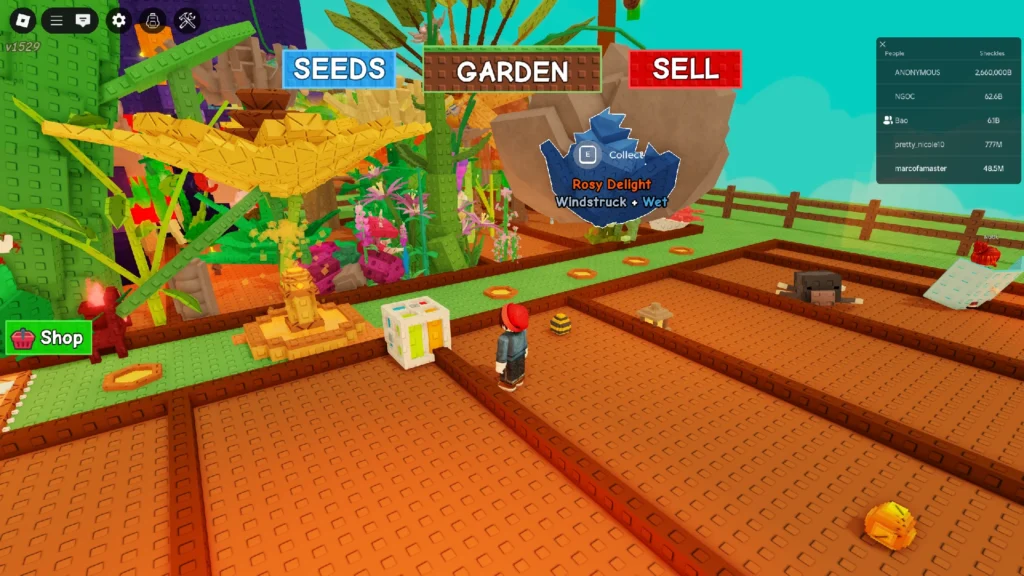
Seed Guide: What to Plant, What to Skip, and When to Scale
Not all seeds are created equal. Some print money. Others are barely worth the plot space they take up. If you want your farm to grow beyond carrot peasantry and into full-blown root vegetable royalty, you’ll need to know what seeds to plant—and when to level them out of your rotation.
Seeds are tiered from Basic to Mythical, and each one has a unique balance of grow time, cost, and profit. Here’s how the tiers usually shake out:
- Basic (Carrot, Potato): Fast grow time, low profit. Great for early farming loops or quick grinds.
- Uncommon (Turnip, Radish): Slightly better returns, still affordable. Perfect mid-game filler crops.
- Rare (Cabbage, Onion): Slower, but better ROI. Use when you’re farming offline.
- Epic/Legendary/Mythical: Higher investment, longer wait, way bigger profits. These are your “overnight” seeds and event unlockables.
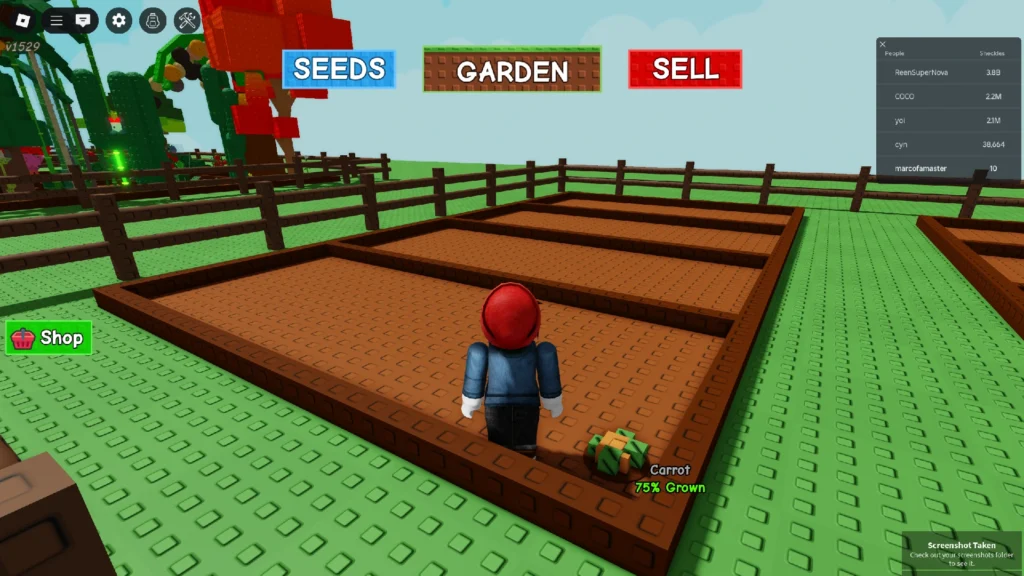
In the early game, stick with carrots and potatoes. Their short timers and low investment make them ideal for learning the loop and racking up your first stack of Sheckles. Once radishes unlock, switch over. They give a clean bump in profit-per-minute without slowing you down.
As you expand your plot and your balance sheet, start blending crops. Use quick-grow seeds when you’re actively playing and slow-grow ones when you’re AFK or heading to bed. Cabbage, tomato, and other mid-tier crops might not be flashy, but they quietly rack up gains with almost no effort.
Late game is all about stacking ROI and prestige. Once you unlock high-tier seeds—especially limited-time event varieties—you should treat your garden like a passive income portfolio. These seeds take a while to ripen, but when they do, they dump massive profits. Events often drop unique seeds with boosted returns or unlockables you can’t get anywhere else, so don’t ignore them.
And finally, mix your crops. A diversified garden means staggered harvests, more flexible play sessions, and a more efficient yield curve. Running a mono-crop layout might look tidy, but variety lets you optimize for both time and income. You can browse through the Full Seed List & Stats here.
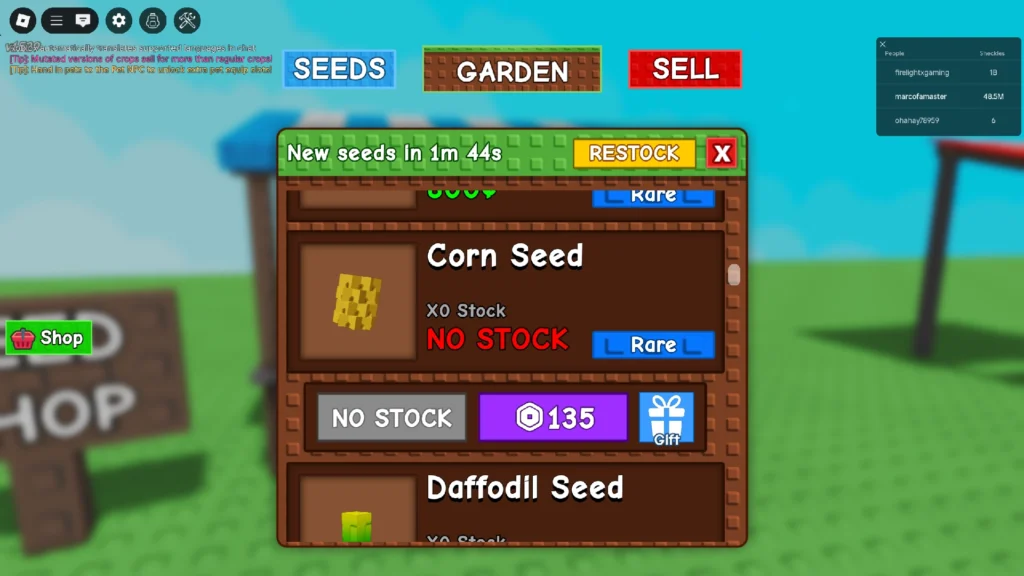
Pets and Helpers: Your Garden’s Secret Weapon
If you’re farming without pets, you’re farming wrong. These cuddly companions aren’t just for looks—they bring passive buffs that can dramatically increase your crop speed, income, or both. Once you unlock them, they quickly become a core part of your optimization strategy.
You can unlock pets in a few ways:
- Crates (purchased with Sheckles or Robux)
- Daily log-in rewards
- Event quests and seasonal rewards
- Occasionally gifted during major content drops
Each pet has a rarity and a passive ability. Some just sit there looking cute. Others? They make your farm sweat profits.
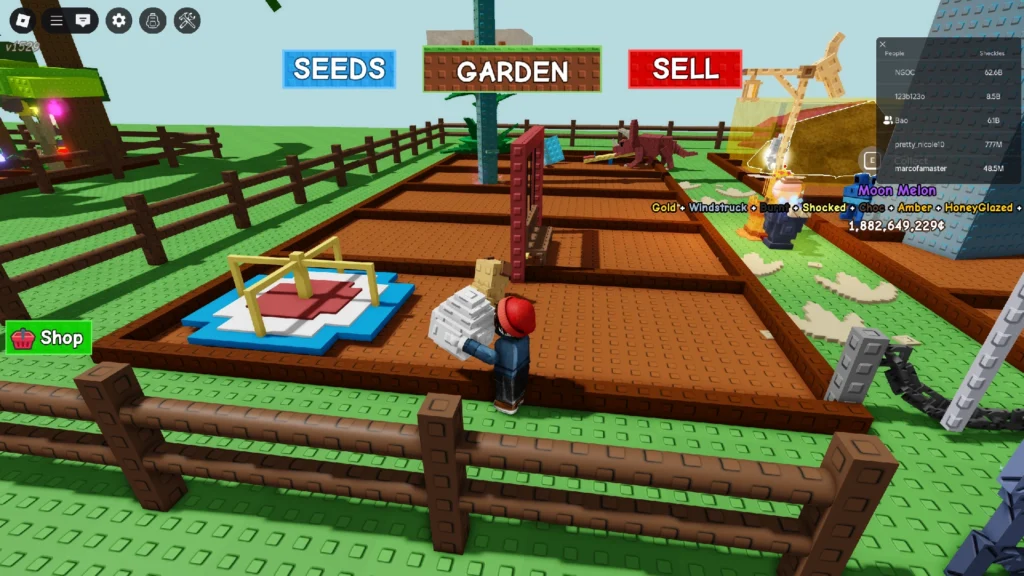
In the early game, you want pets that either speed up your cycle or generate passive income. If you pull a Monkey, Bee, or Turtle from a crate, congrats—you’ve already boosted your efficiency. The Monkey helps with faster growth, the Bee adds a Sheckle bonus per harvest, and the Turtle is great for boosting the value of long-grow crops. These early-game pets might not look powerful on paper, but their effects scale hard over time.
By default, you can equip one pet at a time, but with upgrades or Robux, you can unlock additional slots. If you’re free-to-play, just focus on the one pet that best matches your playstyle—active clicking or AFK farming. If you’re spending, pet slots are one of the few upgrades actually worth the investment.
Some pets may eventually be leveled up or fused, though this feature may depend on seasonal updates or future content drops. If you’ve got duplicates, don’t toss them—you never know when new evolution mechanics will come knocking.
Bottom line: get a pet as soon as you can and make sure it’s doing more than looking cute. Pets are your secret multiplier, and if you’re running a garden without one, you’re basically playing the hard mode of an otherwise chill game. Check out the Full Pet List & Abilities here.
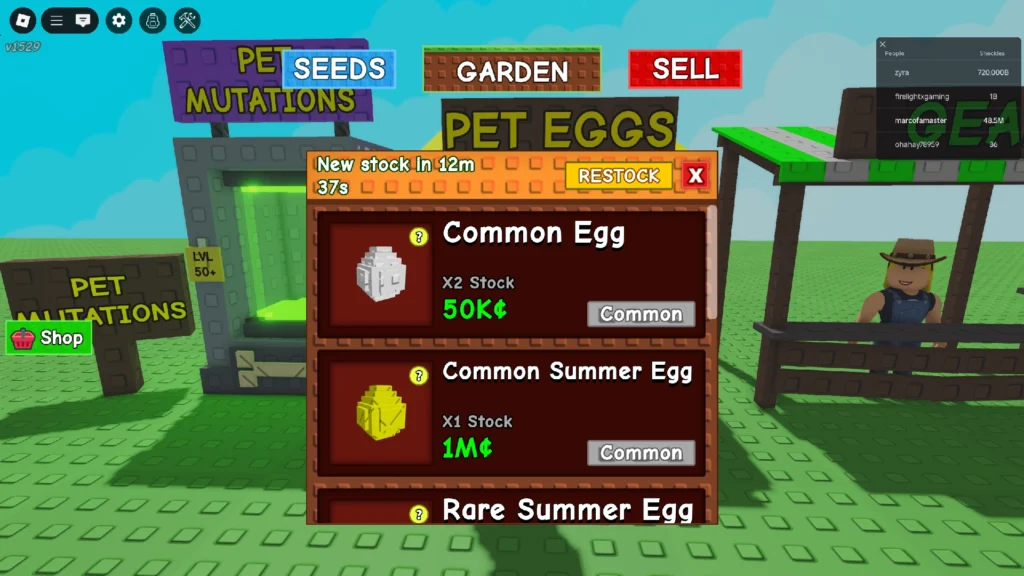
Events & Limited-Time Rewards: Don’t Sleep on Seasonal Seeds
If you’ve been ignoring that glowing event board in the corner of your farm, you’re probably leaving rare seeds, limited cosmetics, and truckloads of Sheckles on the table. Grow a Garden isn’t just about day-to-day planting—it’s also built around a constantly rotating schedule of weekly and seasonal events that drop some of the game’s best rewards.
Events usually run for a few days at a time and come with unique seed types, exclusive pets, or ultra-profitable farming quests. Sometimes it’s as simple as “plant three of this limited flower,” and other times it’s a full-on grind for a reward crate that isn’t available anywhere else. Either way, it’s worth checking in regularly—even five minutes a day can mean the difference between unlocking a Mythical Seed or watching it vanish until next year.
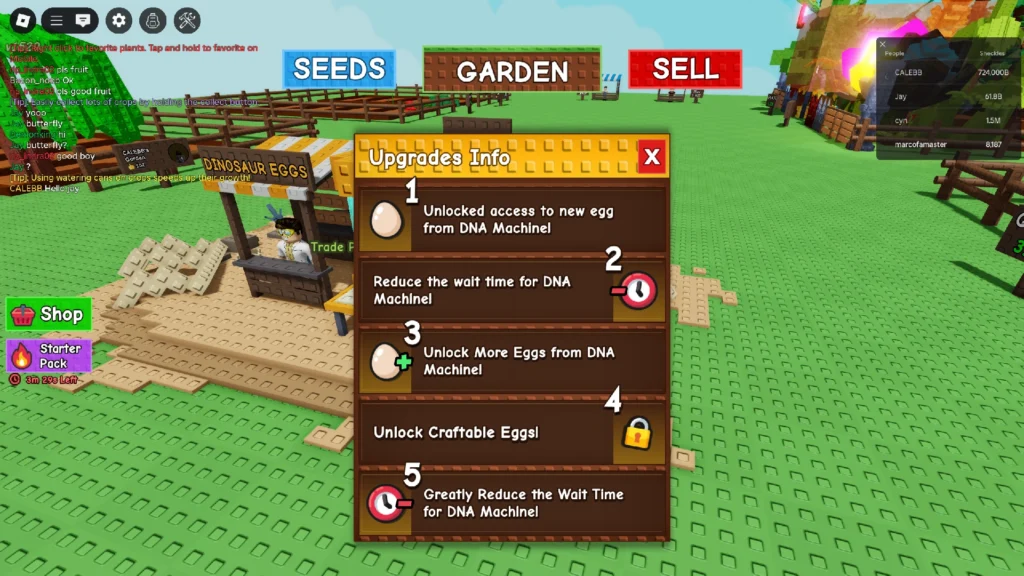
Seasonal events are where the developers go all-out. Expect entire map reskins, festive crops, and special pet crates themed around holidays or Roblox platform-wide events. If you see snow falling or pumpkins sprouting, it’s time to farm like your life depends on it. These windows are short, and most rewards don’t come back.
There’s also the restock events, which refresh crates and sometimes offer major discounts or free seed unlocks just for logging in. Think of these as mini-flash sales for in-game content—if you’re low on Sheckles, they’re the perfect time to stock up.
For max efficiency: always check the event board when you log in. Some events scale based on how far along your garden is, so newer players aren’t excluded. And if you’re not sure whether an event reward is worth chasing? Ask yourself this: will your future garden be mad you passed on a sparkly fire-breathing goat that plants sunflowers automatically? Thought so.
Events aren’t just fluff—they’re often the fastest path to high-value seeds, pet unlocks, and one-of-a-kind items that won’t show up in the regular shop. If you’re serious about scaling your farm or flexing your collection, this is where the grind pays off.
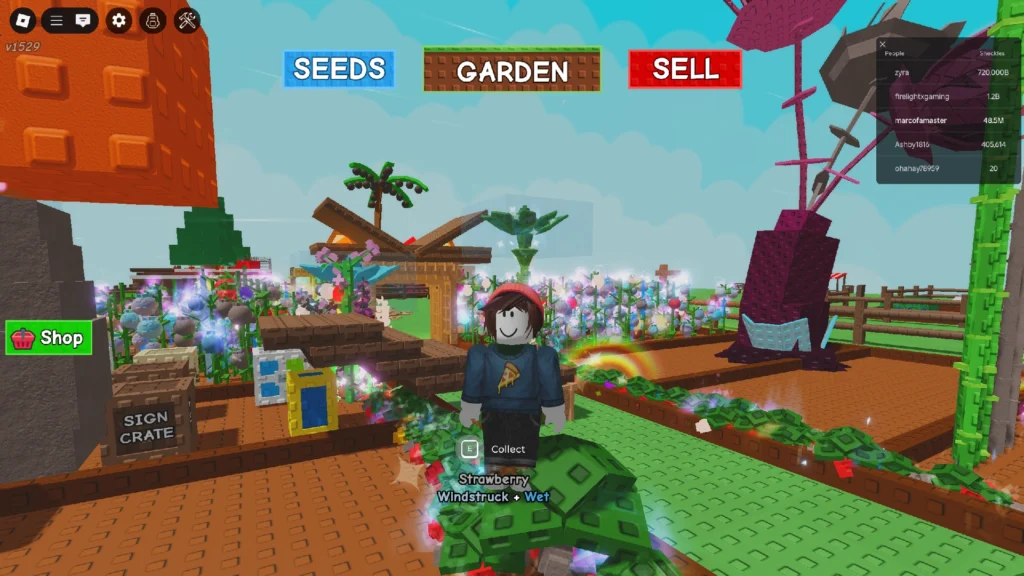
Sheckles 101: How to Earn Fast, Spend Smart, and Stay Rich
Sheckles are the lifeblood of Grow a Garden. You’ll earn them from every harvest, spend them on seeds and upgrades, and burn through them faster than you’d think if you’re not careful. Knowing how to earn efficiently—and more importantly, how to spend wisely—is what separates casual planters from garden moguls.
Early on, you’ll earn Sheckles at a steady trickle from basic crops like carrots and potatoes. It’s tempting to dump those straight into flashy crates or overpriced cosmetic fluff. Don’t. Your first major goal should be scaling your plot and unlocking higher-yield seeds. This isn’t Animal Crossing—your farm is a business, and you’re here to build an empire, not a vibe.
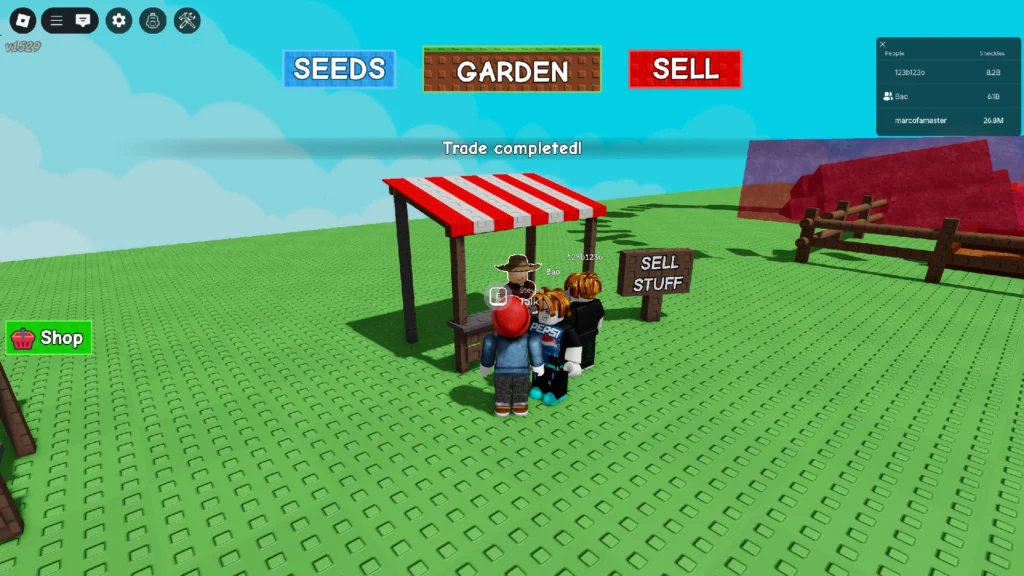
Once you’ve got a few rows unlocked and a rotation of crops going, the income ramps up. Long-grow seeds like cabbage or onions give better returns per minute, especially while you’re AFK. It’s all about matching the crop to your playstyle: fast seeds for active sessions, slow ones for passive growth overnight.
Now, crates. The big shiny boxes tempting you with pets and perks. These can be worth it—but only once you’ve stabilized your core economy. Pets that boost earnings or crop speed can absolutely be game-changers, but not if you’re broke with no land left to plant. Crates should be a mid-game play, not a Day 1 impulse.
Here’s a good rule of thumb:
- Prioritize expansion plots first – More space = more crops = more money.
- Upgrade your soil next – Faster growth means tighter loops.
- Unlock better seeds after that – Aim for higher ROI before going deep into cosmetics.
- Open crates last – Once your farm pays for itself, then chase the flashy stuff.
Also, keep an eye out for free Sheckle drops. Crates sometimes appear on your plot, and events frequently hand out currency just for participating. If you’re active during a restock event, you can scoop up rare seeds or pets for half the usual cost.
In short, think like a tycoon. Your Sheckles are fuel. Waste them early, and you’ll stall out. Spend them smart, and you’ll be passively printing money while other players are still begging the tutorial bot for bonus carrots.
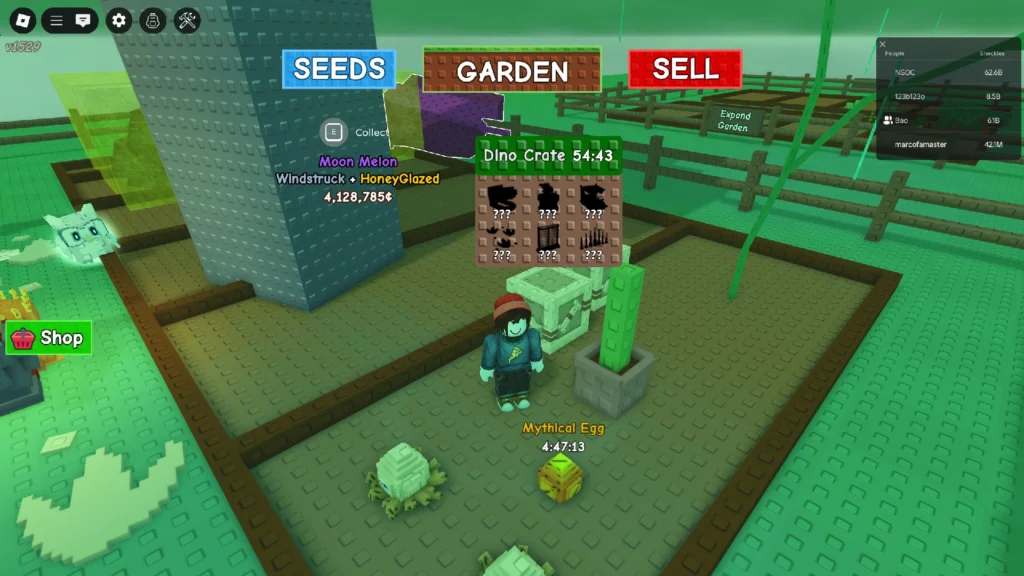
Advanced Tips: Max Yield, No Wasted Clicks
So you’ve got a decent plot, a few solid pets, and your Sheckles are finally stacking up. Great. Now it’s time to stop thinking like a casual gardener and start acting like the CEO of your own dirt empire.
At this point, efficiency becomes everything. Your farm’s layout, crop timing, pet strategy, and even when you log off all play a role in your growth curve. Here’s how to optimize all of it without falling into a spreadsheet rabbit hole (unless that’s your thing).
Plan your play around your crops—not the other way around.
Short-grow seeds like carrots and turnips are great while you’re active, but a complete waste when you’re stepping away. Before logging off, always switch to long-grow crops with high yield per minute ratios. You’ll wake up to a plot full of profit instead of dead time.
Rotate crops, don’t duplicate them.
Instead of filling your farm with one seed type, use a mix of short, medium, and long timers. This keeps harvest cycles staggered, so there’s always something ready and you’re not stuck in 10-minute lulls waiting for a full plot refresh.
Farm before you sleep. Literally.
This is a chill, semi-idle game, so use it that way. The best overnight strategy? Plant high-tier, slow-grow seeds right before bed or school. Come back to a goldmine—and no effort lost.
Use events as income spikes.
Even if you don’t care about cosmetics, event quests often give huge bursts of Sheckles or rare seeds that outperform anything in the normal shop. Keep your eye on the event board and treat events like high-yield side hustles.
Upgrade pace > cosmetic flex.
Yeah, that rainbow particle effect looks cool. But it doesn’t double your income. Focus your currency on soil, plot expansions, and crates that can actually shift your numbers. The flex can wait.
Finally, don’t underestimate AFK efficiency. Even if you’re not actively playing, planting smart before stepping away lets the game do the work for you. This isn’t just idle—it’s optimized idle.
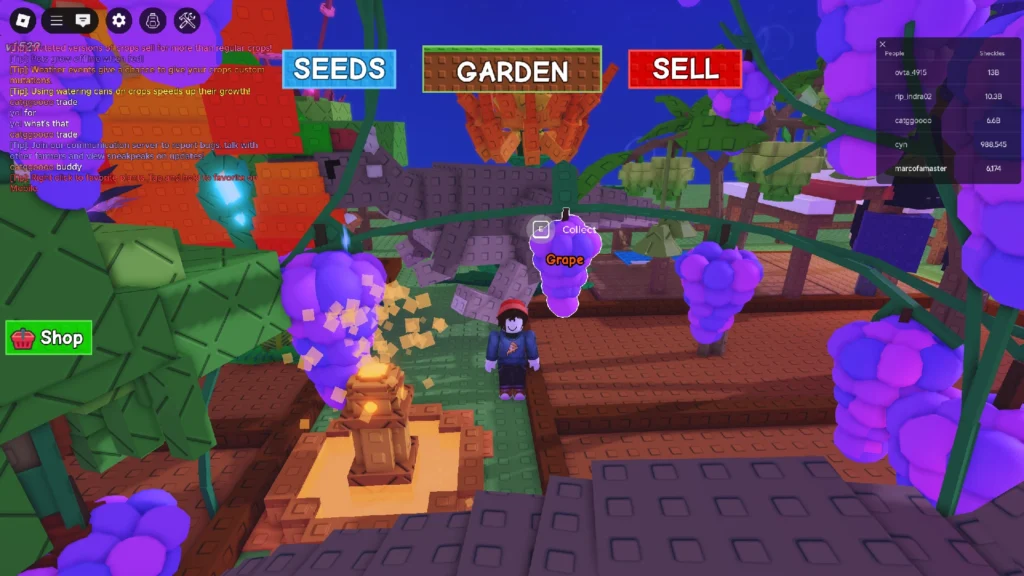
Robux: What’s Worth Buying (and What’s Just Glitter)
Let’s be real: Grow a Garden wants your Robux. Between the sparkly crates, dancing pets, and glitter-coated gamepasses, it’s got all the trappings of a very polite money vacuum. But the good news is, you absolutely don’t need to spend a dime to progress or enjoy the game.
Still, if you’re planning to crack open your wallet, here’s what’s actually worth it—and what’s just dressed-up dirt.
What’s Worth Buying
- Extra Pet Slots: The single biggest upgrade for performance. Equipping two or more pets means stacking buffs like crop speed + extra Sheckles, which scales fast. If you’re going to buy anything, start here.
- Crates (selectively): If you’re deep into the game and your plot is maxed out, crates can give you powerful pets that boost efficiency. Just know they’re lootboxes—you’re gambling for results.
- Permanent Upgrades: Some shop items unlock speed boosts or passive bonuses that last forever. These are much better value than cosmetics.
What to Skip (At Least Early On)
- Cosmetic-only Pets or Trails: They look cool, sure. But they do nothing for your bottom line. Save the flex for when your farm is self-sustaining.
- Seed Skips / Quick-Finish: These are impulse buys. The entire game is built around chill pacing—don’t pay to rush what’s already growing while you nap.
- Rebuying Crates on RNG Burnout: If you’re already 5 crates deep chasing a specific pet? Close the shop. Touch some (virtual) grass. It’s not worth the spiral.
This game does a good job of making paid items feel optional, not required. Robux speeds things up, but it doesn’t gate progress. You can unlock every tier, build a massive farm, and stack pets without spending anything but time and strategy.
That said, if you are dropping Robux, treat it like you’re tipping the devs for a surprisingly addictive crop-clicker—not buying a shortcut to the endgame. Because honestly, half the fun is the grind.
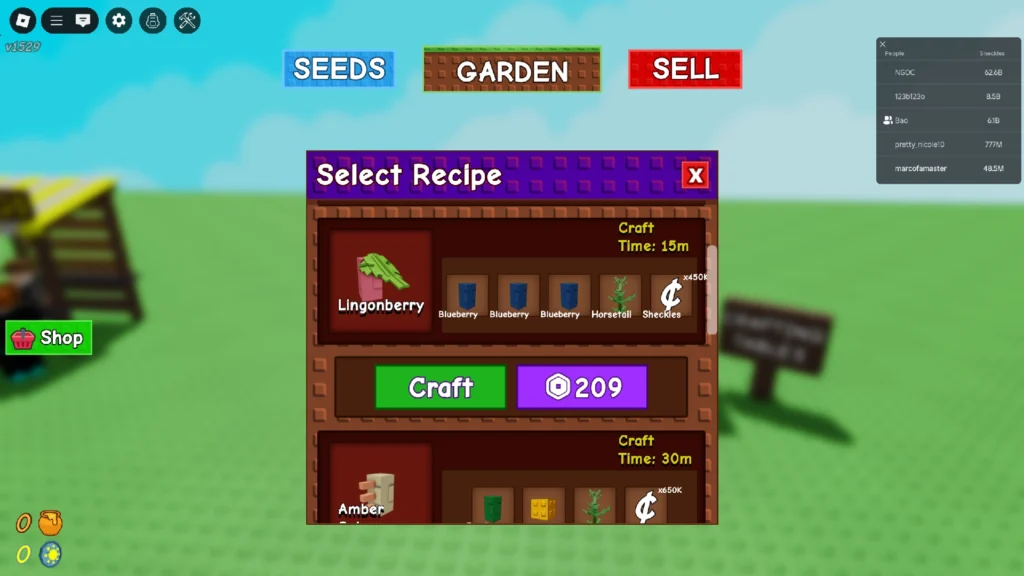
Meta Strategy & Final Tips: How to Garden Like a Pro
By now, you’ve learned how to plant, harvest, optimize, and maybe even accidentally spend 300 Robux trying to win a glitter cat from a crate. You’re basically farming royalty. But if you’re aiming for leaderboard relevance—or just want to play smarter, not harder—there are a few final tips that separate the casual farmers from the sweaty soil scientists.
Know your rhythm.
Figure out how often you log in, and tailor your crop loadout to match it. Daily player? Mix high and mid-yield crops for consistent flow. Checking in every few hours? Load up long-grow seeds and let the game cook in the background. Don’t force a playstyle that doesn’t match your life.
Treat events like mini-expansions.
Events aren’t just filler—they’re often packed with high-ROI seeds and limited pets that can give you permanent advantages. Logging in just for these can be more productive than grinding every day.
Don’t farm on tilt.
Seriously. If you blow your Sheckles on the wrong crate or misclick a plot, it’s not the end of your empire. This game is passive by nature. Take the L, replant, and move on. There’s always another carrot.
Flex later. Scale first.
Cosmetics are fun, and the game makes them very tempting—but don’t waste early income on glitter and sparkles. Get your farm running like a machine first, then slap particle effects on your sunflower army.
Check the wiki, check the Discord.
This game changes fast. New pets drop, seeds rotate, events pop up with zero warning. The Grow a Garden Wiki and Discord are where you’ll hear it first—and they’re full of spreadsheet warriors doing the math so you don’t have to.
In the end, Grow a Garden is the kind of game you can play your way. Want to go full meta and optimize every inch of your soil? Go for it. Prefer to chill and collect every goofy pet? Totally valid. The game respects both ends of the spectrum—and that’s why it’s dominating Roblox right now.
Plant smart. Click often. And if your carrots start glowing suspiciously, maybe water them… or call a wizard.

TL;DR / FAQ
Q: Best crop to start with?
Carrots. Fast, cheap, and perfect for early Sheckle stacking.
Q: What should I spend Sheckles on first?
Plot expansions and soil upgrades. Skip cosmetics early on.
Q: Are pets worth it?
Yes. Even one basic pet can massively boost growth or profits.
Q: Do crops grow while I’m offline?
They sure do. Log off with long-grow seeds planted and come back rich.
Q: What’s the fastest way to earn?
Mix crops by grow time, use growth-boosting pets, and don’t ignore events.
Q: Should I spend Robux?
Totally optional. If you do, buy pet slots or permanent upgrades—skip cosmetic bait.
Q: What’s the most important tip?
Always plant before you log off. Empty plots = wasted time.

